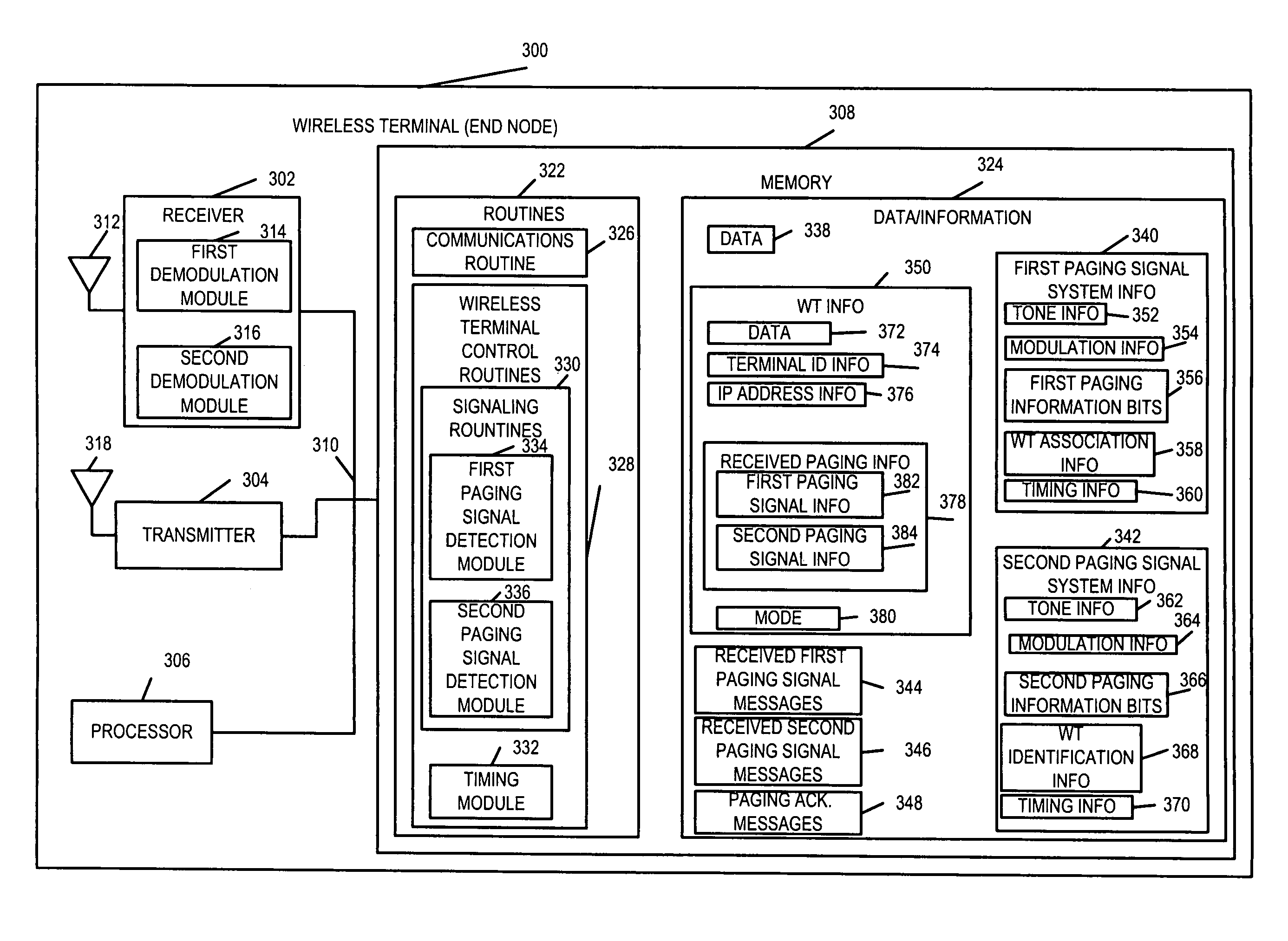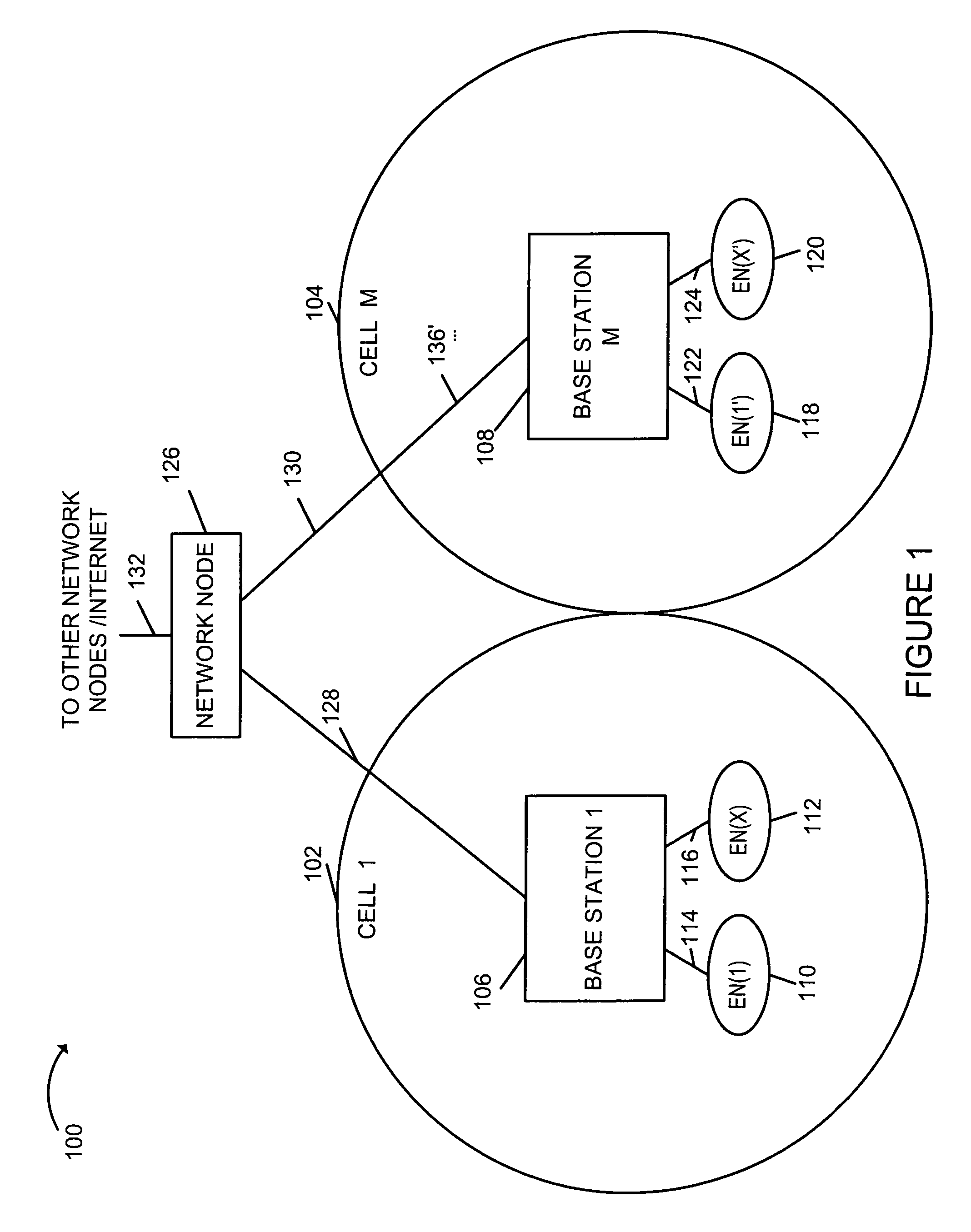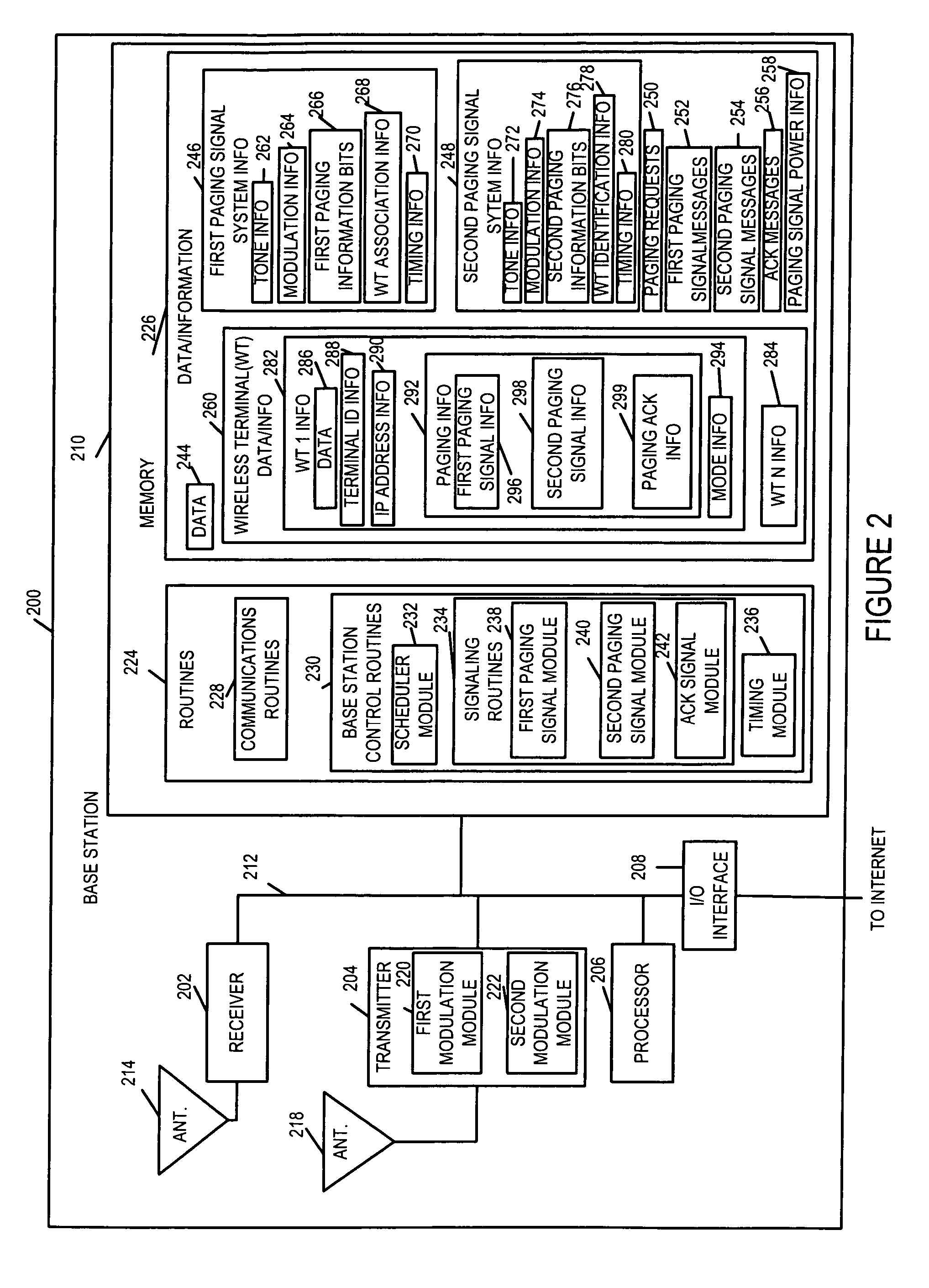Efficient paging in a wireless communication system
wireless communication technology, applied in the field of efficient paging in a wireless communication system, to achieve the effect of higher coding ra
- Summary
- Abstract
- Description
- Claims
- Application Information
AI Technical Summary
Benefits of technology
Problems solved by technology
Method used
Image
Examples
Embodiment Construction
[0032]FIG. 1 illustrates an exemplary wireless communications system 100 implemented in accordance with the present invention. Exemplary wireless communications system 100 is a spread spectrum OFDM (orthogonal frequency division multiplexing) multiple-access system. While an exemplary OFDM wireless communications system is used in this application for purposes of explaining the invention, the invention is broader in scope than the example, and the invention can be applied in many other communication systems, e.g. a CDMA wireless communications system, as well where paging is employed.
[0033]System 100 includes a plurality of cells: cell 1102, cell M 104: Each cell (cell 1102, cell M 104) includes a base station (BS), (BS 1106, BS M 108), respectively, and represents the wireless coverage area of the base station. BS 1106 is coupled to a plurality of end nodes, (EN(1) 110, EN(X) 112) via wireless links (114, 116), respectively. BS M 108 is coupled to a plurality of end nodes, (EN(1′) ...
PUM
 Login to View More
Login to View More Abstract
Description
Claims
Application Information
 Login to View More
Login to View More - R&D
- Intellectual Property
- Life Sciences
- Materials
- Tech Scout
- Unparalleled Data Quality
- Higher Quality Content
- 60% Fewer Hallucinations
Browse by: Latest US Patents, China's latest patents, Technical Efficacy Thesaurus, Application Domain, Technology Topic, Popular Technical Reports.
© 2025 PatSnap. All rights reserved.Legal|Privacy policy|Modern Slavery Act Transparency Statement|Sitemap|About US| Contact US: help@patsnap.com



